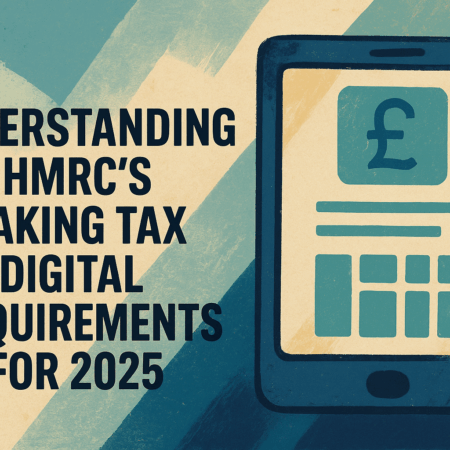Hey there, savvy saver! If you’re staring at your latest energy bill and thinking, “There has to be a better deal out there,” you’re spot on. In the UK’s ever-fluctuating energy market, switching suppliers isn’t just smart—it’s a game-changer for your wallet. But here’s the catch: those pesky exit fees can sneak up and eat into your savings faster than a winter heating bill. Don’t sweat it, though. In this energy switching guide 2025, we’ll walk you through how to switch energy suppliers without paying exit fees, arming you with the latest tips to avoid energy exit fees and lock in the best time to switch energy providers.
Picture this: the Ofgem energy price cap just ticked up by 2% to £1,755 for a typical dual-fuel household from October to December 2025. That’s an extra £35 a year if you’re on a standard variable tariff (SVT). But with fixed deals potentially saving you up to £200 annually by shopping around, why settle? Whether you’re dodging penalties on a fixed contract or eyeing a fresh start, we’ve got your back. Let’s dive in and turn that bill shock into bill savings.
What Are Energy Exit Fees and When Do They Apply?
Before we get to the good stuff—like snagging a penalty-free switch—let’s demystify exit fees. They’re essentially a “break-up fee” from your current supplier if you bail early on a fixed-term contract. Think of it as the energy world’s equivalent of a gym membership cancellation charge: annoying, but avoidable with the right timing.
The Basics of Exit Fees
Exit fees kick in when you’re on a fixed-rate tariff, which locks you into a set price per unit of gas and electricity for 12-24 months. This stability is great for budgeting, but leaving before the end? Your supplier might hit you with £50-£60 per fuel (gas or electric), totaling £100+ for dual-fuel setups. They’re meant to cover the supplier’s “direct economic loss” from wholesale price fluctuations, but Ofgem keeps them in check to ensure they’re fair and transparent.
No fees apply if you’re on a variable tariff (like the SVT under the price cap), as these roll with market changes and offer flexibility. Post-energy crisis, Ofgem’s rules emphasize clarity: suppliers must spell out fees upfront in your contract.
When Do Exit Fees Not Apply?
Here’s the golden rule: No exit fees in the final 49 days of your contract. Ofgem mandates this “switching window” to encourage competition without trapping you. So, if your fix ends on December 31, you can switch fee-free from mid-November onward. Ignore this, and you could face charges—even if the new deal saves £20/month.
Pro tip: Always check your contract end date via your online account or latest bill. If you’re unsure, ring your supplier. And remember, moving house? Most let you port your tariff penalty-free, but confirm with both old and new providers.
Step-by-Step Guide to Switching Without Exit Fees
Ready to make the move? Switching is simpler than ever in 2025, thanks to Ofgem’s Energy Switch Guarantee—most switches wrap up in 5 working days. Follow this UK energy supplier switch without penalties blueprint, and you’ll be sipping cheaper tea in no time.
Step 1: Check Your Contract Status
- Log into your supplier’s portal or app (e.g., British Gas, EDF) to find your tariff type, end date, and any exit fees.
- On a variable tariff? Switch anytime—no penalties.
- Fixed tariff? Mark your calendar for 49 days before expiry. Use tools like [link to contract checker tool] for reminders.
Step 2: Gather Your Energy Usage Data
- Grab your postcode, current supplier, payment method (Direct Debit? Prepayment?), and annual usage (kWh) from your bill.
- Estimate usage: Ofgem’s “typical” is 2,700 kWh electricity and 11,500 kWh gas annually. Adjust for your household—bigger family? Bump it up.
Step 3: Compare Deals with Trusted Sites
- Fire up comparison sites like Uswitch, MoneySavingExpert’s Cheap Energy Club, or The Energy Shop. These are Ofgem-accredited and show personalized quotes.
- Filter for “no exit fees” or deals beating the £1,755 cap. Aim for fixed tariffs under £1,600 for typical use.
- Check MSE for collective switches—our Big Energy Switch Event could net you exclusive rates.
Step 4: Time It Right in the 49-Day Window
- Start comparing 60 days out to beat the switch timeline (up to 21 days total, including 5-day transfer).
- Sign up during the window: Your new supplier handles the old one’s exit notification. Boom—penalty dodged.
Step 5: Complete the Switch
- Provide bank details for Direct Debit (best for savings) and meter readings if non-smart.
- Enjoy the 14-day cooling-off period: Change your mind? Cancel fee-free.
- Your new supplier confirms the date; expect seamless handover. If delayed, claim £30 auto-compensation.
Voila! You’re switched, saved, and stress-free.
Tips for Finding No-Exit-Fee Deals or Waivers
Not all suppliers are fee fiends. In 2025’s competitive market, many sweeten the pot with flexible options. Here’s how to hunt them down:
- Seek Out No-Exit Tariffs: Providers like Octopus Energy and Outfox the Market offer fixes with zero penalties—perfect for the indecisive. Compare via [link to no-fee deals page].
- Waiver Promotions: Watch for seasonal waivers, like British Gas’s no-fee switches to their fixed tariffs. Sign up for alerts from MSE or Uswitch.
- Loyalty Perks: Some waive fees for existing customers switching internally—ask first!
- Bundle Smart: Dual-fuel deals often slash effective costs, but single-fuel switches (e.g., just gas) work if one’s cheaper elsewhere.
Bonus: If debt’s an issue (under £500 per fuel), you can still switch—debt transfers over. Struggling? Chat to Citizens Advice for free help.
Potential Savings, Common Pitfalls, and Dual-Fuel vs. Single-Fuel Switches
Switching smart could pocket you £200+ yearly, per Ofgem—especially with the cap’s 2% hike. But pitfalls lurk:
Unlocking Savings
- Fixed vs. Cap: Fixes beat the £1,755 cap by £100-200; trackers like Octopus follow wholesale dips.
- Usage Tweaks: Direct Debit saves £135/year vs. prepay; smart meters add another £10-20 off.
Watch Out For…
- Overlooking Fees: Always calculate: £100 fee vs. £150 savings? Worth it. Otherwise, wait.
- Meter Mismatches: Economy 7 tariffs? Ensure the new deal fits—otherwise, costs soar.
- Supplier Busts: Rare post-crisis, but protected: Auto-transfer to a new SVT, then switch again fee-free.
Dual-Fuel vs. Single-Fuel: Which Wins?
- Dual-Fuel: One bill, 5-10% discounts—ideal for most homes. But if one’s supplier shines (e.g., cheap electric only), split for max savings.
- Single-Fuel Tip: Switch gas/electric separately if regional rates vary—Northern regions often cheaper for gas.
Latest 2025 Updates: Ofgem Changes, Net-Zero, and Smart Meters
The UK’s energy scene is greener and fairer in 2025, shaped by post-crisis reforms. Ofgem’s price cap rose 6.4% to £1,849 in April-June, then dipped to £1,720 by July-September, before the October bump. No full exit fee bans yet, but the 49-day rule holds firm, with calls for reductions amid 25% of 2021 complaints tied to fees.
Net-zero policies? Expect incentives for green tariffs—suppliers like Ecotricity match 100% renewables, aligning with the UK’s 2030 clean power goal. Switching to these could qualify for grants via [link to net-zero incentives article].
Smart meters: Now mandatory for new/existing installs by 2025, they enable time-of-use tariffs (cheaper off-peak) and accurate billing—key for avoiding overcharges post-switch. Refuse one? No biggie, but you miss savings.
FAQs: Your Quick Q&A on Energy Switching
Q: How long does a switch take in 2025? A: Up to 5 working days under the Energy Switch Guarantee—faster than a Amazon delivery!
Q: Can I switch if I owe money? A: Yes, if debt’s under 28 days or £500/fuel for prepay. It transfers over.
Q: What’s the best time to switch energy providers in 2025? A: End of your fix (49-day window) or post-cap announcements (e.g., November for Q1 2026). With volatility, anytime beats sticking on SVT.
Q: Are there bans on exit fees? A: Not yet, but Ofgem caps them as “proportionate.” Watch for reforms in the Switching Improvement Plan.
Q: Does switching affect my credit score? A: Nope—it’s risk-free.
Wrapping Up: Your Call to Action—Switch Today!
There you have it: a foolproof path to switch energy suppliers without paying exit fees in 2025’s dynamic market. From nailing that 49-day window to cherry-picking no-fee gems, you’re now equipped to slash bills and sidestep pitfalls. Remember, the best time to switch energy providers is now—before the next cap tweak bites.
Don’t just read this—act! Head to Uswitch or MSE, punch in your details, and compare quotes. You could save £200 before Christmas. Got questions? Drop us a comment below or check [link to related article on energy-saving hacks]. Here’s to warmer homes and fatter wallets!









